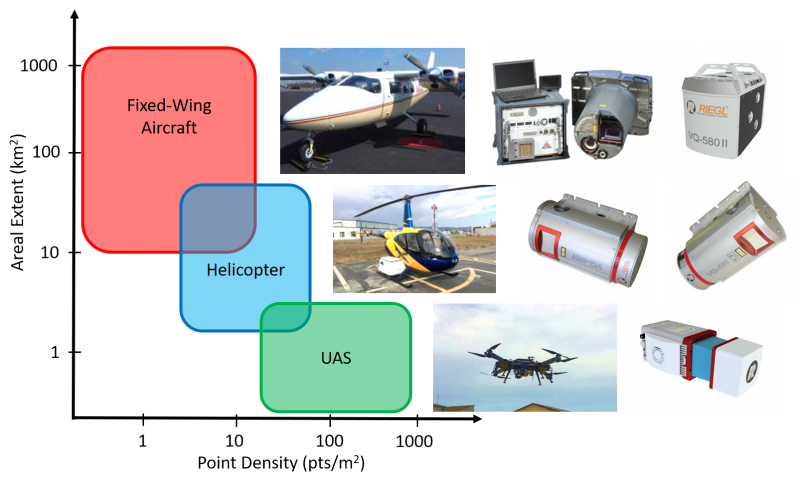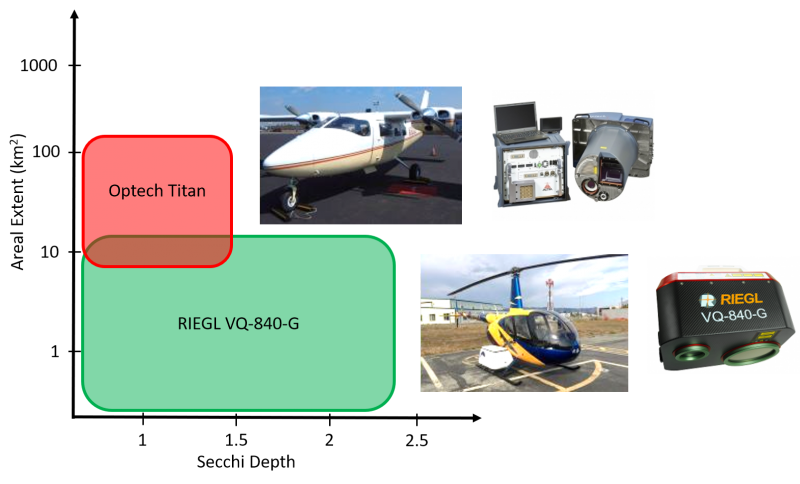How do I request data acquisition?
NCALM is happy to assist you in collecting high-resolution, research-grade geodetic imaging for your scientific project needs. The National Science Foundation provides partial funding to support the center's operations, therefore most data acquisitions undertaken by NCALM are performed on a cost recovery basis. In order to obtain an estimate for NCALM data acquisition, please follow the steps given below.
Step 1: We need to know the location of your project, the size of the area to be imaged, and the approximate data density required. To get started, please email ncalm [at] egr.uh.edu (ncalm[at]egr[dot]uh[dot]edu) with a KML of your area(s) of interest, required point density (laser pulses/square meter), and timeframe. Inform us if it is for a grant proposal (NSF or other funding organization) or for a project where funding has already been obtained.
Step 2: Someone from the research staff at NCALM will call or email you to discuss project deliverables and logistics to better understand your needs and science goals for high-resolution geodetic imaging.
Step 3: NCALM has multiple laser sensors and acquisition platforms available to collect your lidar and imagery data. Based on the information gathered in Steps 1 and 2, we will evaluate our technologies to decide on the most cost-effective instrumentation for the project. The figures below give some general guidelines on the most cost-effective options for data acquisition given the size and required point density of a project.
What platform and instrument will NCALM use for my project?
Topographic Mapping
For topographic mapping, NCALM is able to acquire data from fixed-wing, helicopter, or uncrewed aerial systems (UAS). We will always choose the most cost-effective option.

Bathymetric Mapping
For shallow water bathymetry projects, the main consideration is expected water depths and the clarity of the water surveyed. Green lasers are required to do bathymetric mapping, so the instrumentation and platforms available are different than for topographic projects.

Step 4: Based on a selection of the most cost-effective option to complete your project, we will provide an estimated budget for initial discussion based on the instrument selected and approximate flying time. We are then happy to work with you to modify the data acquisition budget to fit your requirements.
Step 5: NCALM will provide a formal letter of quotation if budget details are acceptable. Note that if the budget is for an NSF proposal, you should also follow our suggested PI guidelines given here.
What else do I need to know?
Mobilization: Each project estimate will include mobilization costs that are dependent on project location, number of projects in a campaign, and platform/instrument being utilized. If you are able to be flexible about timing of data acquisition, we can often reduce the mobilization costs by collecting several projects at the same time.
Deliverables: NCALM's typical deliverables are:
- Classified lidar point cloud tiles using a standard datum in LAS 1.4 format.
- Bare-earth and first-return rasters in TIFF format.
- Data collection and product report.
Additional formats and deliverables are always possible. These options should be discussed with NCALM prior to provision of a formal letter of quotation.

